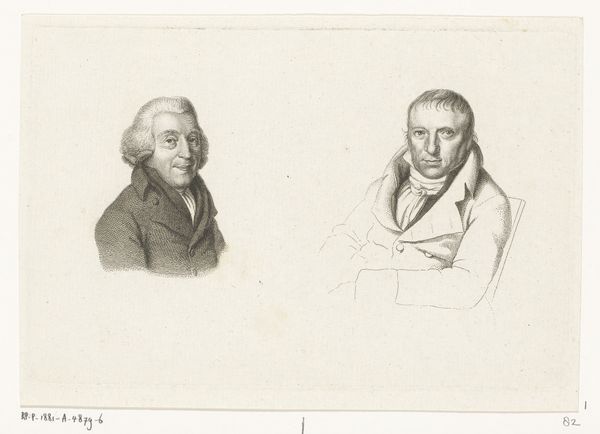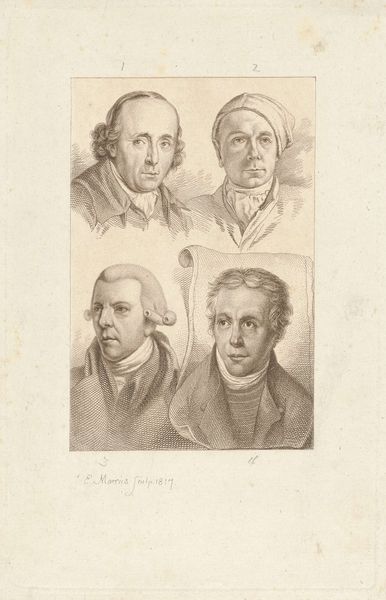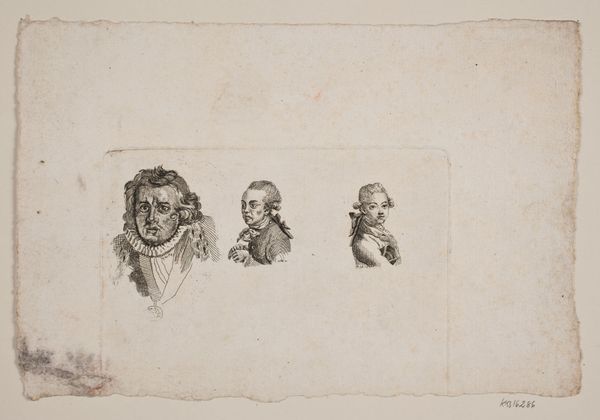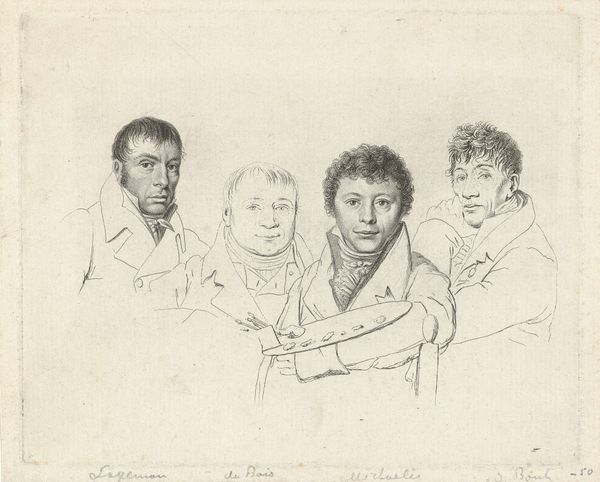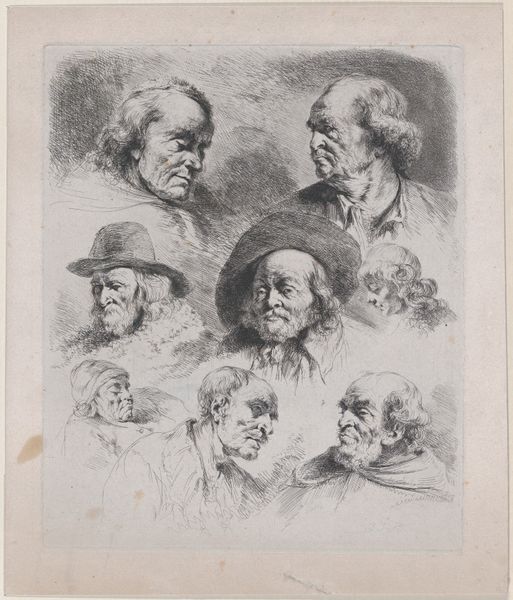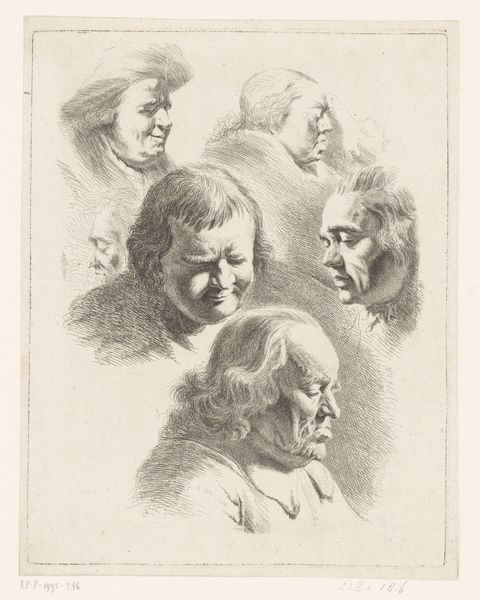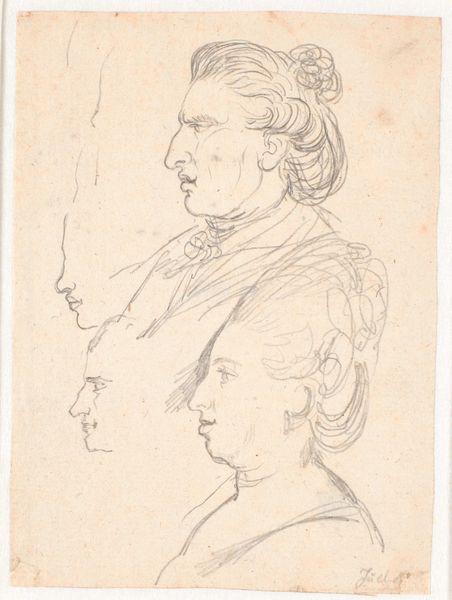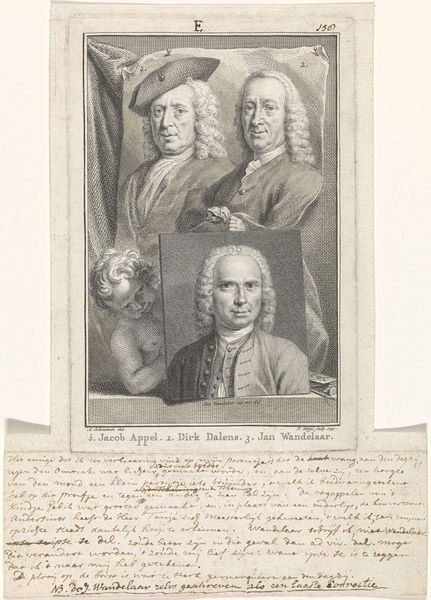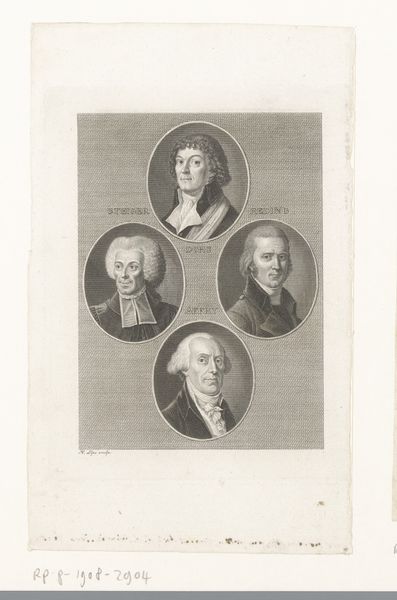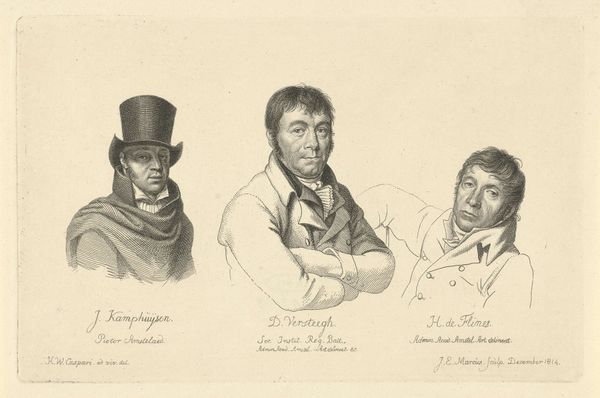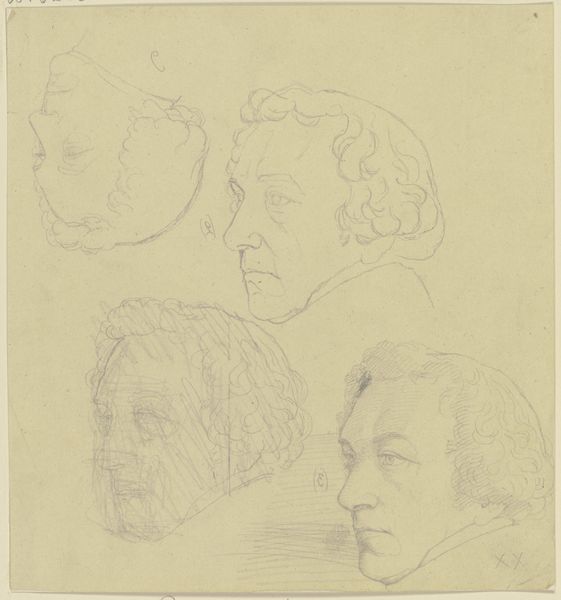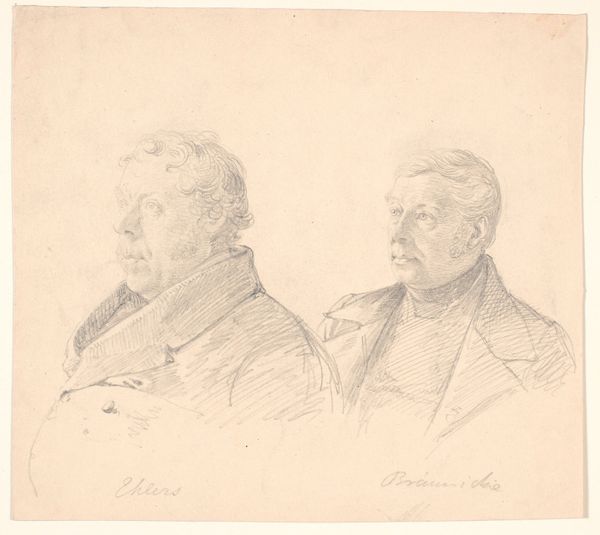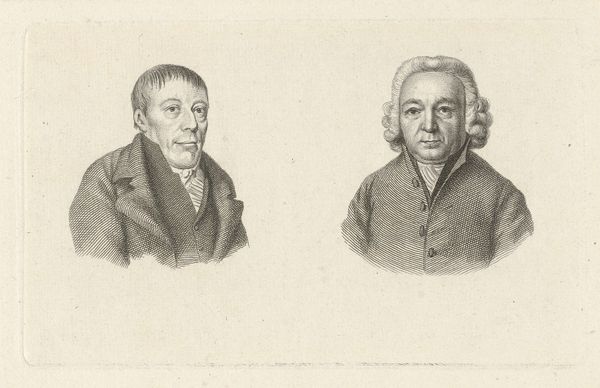
Portretten van Jacobus Buys, Izaak Schmidt en Jurriaan Andriessen 1812
0:00
0:00
drawing, pencil
#
portrait
#
drawing
#
neoclacissism
#
group-portraits
#
pencil
#
portrait drawing
#
academic-art
#
realism
Dimensions: height 156 mm, width 237 mm
Copyright: Rijks Museum: Open Domain
Curator: Here we have a striking group portrait drawn in pencil, dating to 1812, by Jacob Ernst Marcus. It’s titled, "Portraits of Jacobus Buys, Izaak Schmidt, and Jurriaan Andriessen." You can find this piece over in the Rijksmuseum. Editor: My initial feeling? Stoic. It’s fascinating how the artist has captured a distinct personality in each face with what looks like simple pencil strokes. Curator: The realism is particularly noteworthy; Marcus manages to imbue these figures with a sense of individual character while adhering to the neoclassical style prevalent at the time. It’s not just about physical likeness, is it? It's also a reflection of the social standing of the subjects. Editor: Absolutely, these are clearly men of importance within their community, conveyed through their composed expressions, even down to their powdered wigs and carefully tailored coats. Curator: Consider also the historical context. In the Netherlands in 1812, portraiture was more than capturing likeness; it was about solidifying legacy and portraying a very specific narrative around these individuals in the emerging middle class. How do you feel it resonates today? Editor: Viewing it through a contemporary lens, I’m struck by the homogeneity of the subjects – three white men. It provokes questions about representation. Who had the privilege of being memorialized in art at that time, and whose stories were excluded from mainstream narratives? What’s so unique about their expressions in the end is just a depiction of that particular time and the social norms around how to pose and display respectability for men. Curator: It's an interesting point and vital to look at historical omissions and begin filling those holes. We must acknowledge the portrait and portraits such as this tell us a great deal about 19th-century artistic values. Editor: Agreed. It’s crucial that museums present art from the past but invite our visitors to engage in crucial discussions about power, representation, and inclusivity.
Comments
No comments
Be the first to comment and join the conversation on the ultimate creative platform.
